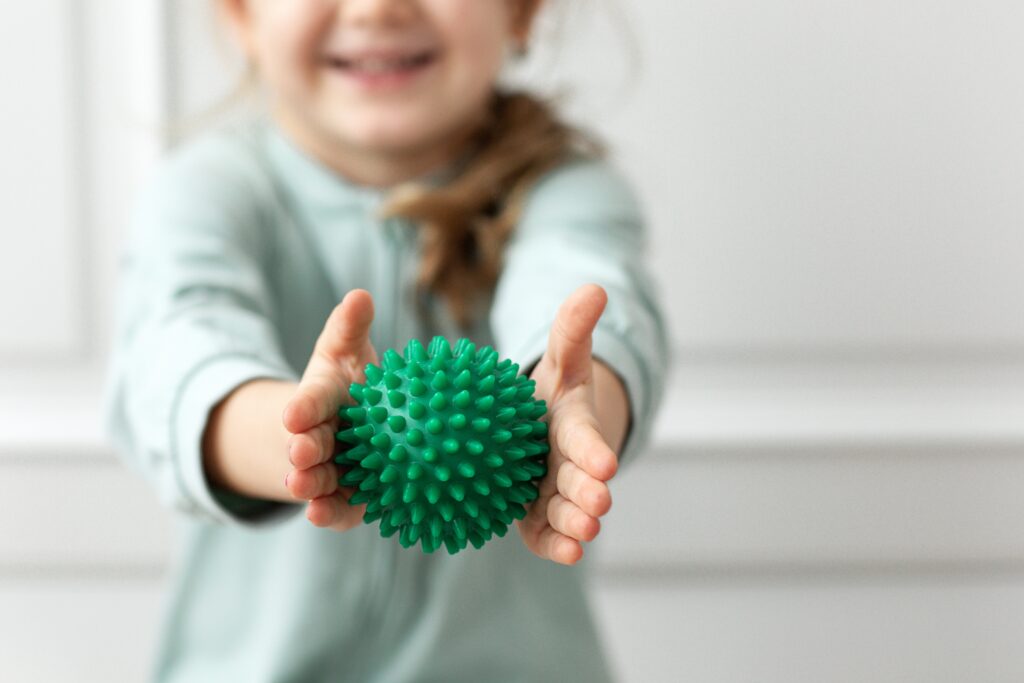
Physically and cognitively, children and adolescents are always growing and changing. It is crucial to make sure kids have a solid foundation for ideal health and well-being as they go through the difficulties of growth spurts, sports activities, and regular physical demands.
Children and adolescents benefit greatly from physical therapy, which helps them develop their strength, coordination, and resilience. This blog post will examine the advantages of physical therapy for kids, using examples to emphasize its importance.
Motor abilities, which involve the control and synchronization of powerful muscle groups, are improved by physical therapy techniques. For instance, a child with developmental coordination problems can find it difficult to run, jump, or catch a ball. A physical therapist can assist in enhancing their balance, coordination, and general motor abilities through specialized exercises. Through routine and practice, these conditions can be improved drastically.
Consider Kyle, a 7-year-old who experienced difficulties in physical education. Kyle’s balance and coordination steadily improved using yoga poses, strength exercises, stretching, and more. Allowing him to take part in sports and take part in recess with his classmates.
Addressing Pediatric Orthopedic Conditions: Sports-related injuries, fractures, and scoliosis are a few examples of orthopedic conditions that can affect children and adolescents and call for specialist care. In order to treat these diseases, physical therapy offers individualized treatment regimens that put a priority on managing pain, encouraging healing, and regaining function.
For instance, Sarah, a gymnast who is 14 years old, fractured her wrist during practice. Her physical therapist aided her recovery by combining therapeutic exercises, manual therapy methods, and activity adjustment. These efforts allowed her to ensure her athletic potential isn’t compromised by an early childhood injury.
Physical therapy is essential in the treatment of neurological conditions that affect children and adolescents, such as cerebral palsy, spina bifida, and muscular dystrophy. Movement, coordination, and balance issues are frequently evident in these disorders. To increase mobility and independence, a physical therapist may use a variety of strategies, including gait training, stretching exercises, and adaptive equipment. With some of the more dire conditions, physical therapy may not cure the patient of their condition but will help them substantially with maintaining and adapting to their condition.
Sports-related injuries are common among young athletes since they participate in physical activity on a regular basis. Physical therapists assist with injury recovery and play a significant part in preventing injuries through instruction, conditioning plans, and advice on good technique.
In order to heal from knee ligament damage, Jack, a 16-year-old soccer player, sought physical therapy. To assist Jack in returning to the field safely and lower the chance of reinjury, his physical therapist created a thorough program that included strength training, flexibility exercises, and sport-specific drills using cones, obstacles, and other props and physical therapy tools.
Physical therapy for children and adolescents goes beyond the clinic or rehabilitation facility, promoting healthy lifestyle habits. Young people and their families are taught by physical therapists the value of leading healthy lifestyles. They offer advice on workout regimens, eating habits, posture awareness, and methods for preventing injuries. Physical therapists assist children and adolescents in building a solid foundation for long-term health and well-being by teaching these habits early on.




